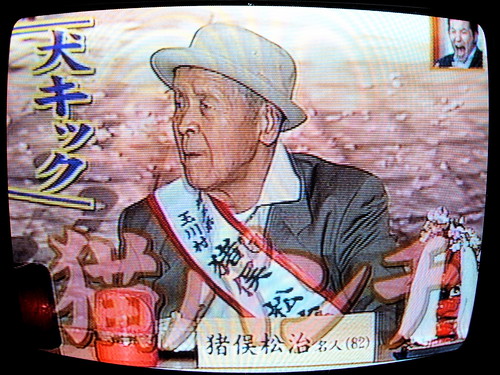New Zealand
An end to cigarettes? New Zealand aims to create smoke-free generation | New Zealand | The Guardian – banning tobacco sales to people born after 2004, will drive illegal sales. New Zealand could quite easily have a prohibition type situation on his hands with rampant tobacco smuggling and organised crime. New Zealand has been a leader in tobacco legislation but replication of this in other countries could be challenged in courts on grounds of discrimination
Business
The vanishing billionaire: how Jack Ma fell foul of Xi Jinping | Financial Times – the Yahoo! and Softbank Alipay ownership piece should be read by anyone looking to invest in Chinese stocks. Bilking the western investors was seen as a mark of loyalty by the Chinese government
China
Invisible China: How the Urban-Rural Divide Threatens China’s Rise – ChinaTalk – Xi Jinping just like two days ago was bragging about all these gangs that he’s been able to crack down on it. But the fact that he’s able to say he cracked down on [3,600 “mafia like groups] means that there were a whole lot more than [3,600 ganges- to crack down on in the first place. In the past few years, a few of the potential faults that you write about if China isn’t able to increase its workforce and find decent jobs for the common folk who haven’t made it to the cities yet is crime and social unrest. What are your thoughts about criminal enterprise in China and how it feeds into the themes that you talk about in your book? In the 1980s in Mexico, there was no crime. It wasn’t the Mexico that we know today. The Mexican government talked about what a safe place it was as they were growing very fast. Of course, everybody had a job. Everybody was employed. And that’s China today. China’s not a dangerous place, but Mexico wasn’t a dangerous place in the 1980s. What happened in Mexico, of course, is China happened, right? Wages in Mexico went up, as everybody got employed and the factories in Mexico decided to move. The maquiladoras moved to China. They moved back to the United States. They moved to elsewhere in the world and suddenly, within a couple years, 10 million people lost their jobs and that was 20% of the Mexican labor force – such a great interview
Consumer behaviour
Covid-19 and the rise in news misinformation – Press Gazette – “Our analysis of traffic to the top 100 global English-language news sites reveals that while news consumption soared overall in 2020, untrustworthy news sites saw bigger surges in readership” – Hat tip to Alan Morrison
Finance
How Dublin quietly became dumping ground for some of Europe’s riskiest corporate loans | Irish Times – shadow banking special purpose vehicles moved from Holland to Ireland
Ideas
Books that suck you in and books that spin you out – Austin Kleon
Systems Thinking in Seven (7) Images
Luxury
Louis Vuitton joins China’s JD.com amid online luxury battle | Vogue Business – interesting move, is Tmall losing its grip?
How Arnette Is Leading the Movement to Bio-Friendly Eyewear – bioplastics
Gucci “Aria” Show Reveals Co-branded Balenciaga Pieces – SLN Official – this all looks like the the kind of shanzhai items I would have seen back when I first visited Shenzhen 15 years ago
Marketing
Browse our library of ebooks, webinars and videos – handy collection of resources by Meltwater
Retailing
What brands should know about Zhihu | Vogue Business – Initially invite-only, Zhihu has grown into an online content community of 75.7 million average monthly active users, who ask and answer questions and have access to in-depth articles, columns, videos and live-streaming sessions, often produced by the platform’s 43.1 million content creators… It makes most of its revenues through online advertising, but also offers a membership programme and online education to users, as well as content-commerce solutions to brands
How the pandemic helped Walmart battle Amazon Marketplace for sellers | Reuters
The a16z Marketplace 100: 2021
Security
Future Trends: Far-Right Terrorism in the UK – A Major Threat? | Global Risk Insights – there are also reasons to think that far-right terrorism may not develop into the major threat. Large ideological schisms exist within the far-right milieu (such as disagreements over anti-Semitism, capitalism, and violent vs democratic action) that keep far-right activity fractured. Far-right groups also tend to disintegrate due to infighting at a higher rate than Islamist groups do. Additionally, law enforcement may find far-right groups easier to infiltrate and monitor, as there would not be any linguistic or cultural barriers to surmount
The $1 billion Russian cyber company that the US says hacks for Moscow | MIT Technology Review – One area that’s stood out is the firm’s work on SS7, a technology that’s critical to global telephone networks. In a public demonstration for Forbes, Positive showed how it can bypass encryption by exploiting weaknesses in SS7. Privately, the US has concluded that Positive did not just discover and publicize flaws in the system, but also developed offensive hacking capabilities to exploit security holes that were then used by Russian intelligence in cyber campaigns.
Much of what Positive does for the Russian government’s hacking operations is similar to what American security contractors do for United States agencies. But there are major differences. One former American intelligence official, who requested anonymity because they are not authorized to discuss classified material, described the relationship between companies like Positive and their Russian intelligence counterparts as “complex” and even “abusive.” The pay is relatively low, the demands are one-sided, the power dynamic is skewed, and the implicit threat for non-cooperation can loom large
US Senator Who Served as Ambassador to Japan Lauds Closer Ties but Issues Warning | Voice of America – English – American concern about technology transfers extends beyond its relationship with Japan. “When the U.S. shares its cutting-edge technology with allies, it runs the risk that some of what is shared ends up in the hands of adversaries,” she said. For his part, Hagerty says that compared with four years ago, when he first took up the post as U.S. ambassador to Japan, the strategic challenge facing America “continues to get more serious, particularly with respect to China.”
Technology
Designed by Apple in California, Not Assembled in China | Above Avalon – Apple’s brand is less dependent on where its assembled
Logic Chip Teardown From Early 1990s IBM ES/9000 Mainframe | Hackaday – The 1980s and early 1990s were a bit of an odd time for semiconductor technology, with the various transistor technologies that had been used over the decades slowly making way for CMOS technology. The 1991-vintage IBM ES/9000 mainframe was one of the last systems to be built around bipolar transistor technology, with [Ken Shirriff] tearing into one of the processor modules (TCM) that made up one of these mainframes – I remember when I was at college that bipolar / CMOS hybrid chips were touted to provide a radically faster computer chip
2102.12627] How to represent part-whole hierarchies in a neural network – This paper does not describe a working system. Instead, it presents a single idea about representation which allows advances made by several different groups to be combined into an imaginary system called GLOM. The advances include transformers, neural fields, contrastive representation learning, distillation and capsules. GLOM answers the question: How can a neural network with a fixed architecture parse an image into a part-whole hierarchy which has a different structure for each image? The idea is simply to use islands of identical vectors to represent the nodes in the parse tree. If GLOM can be made to work, it should significantly improve the interpretability of the representations produced by transformer-like systems when applied to vision or language



